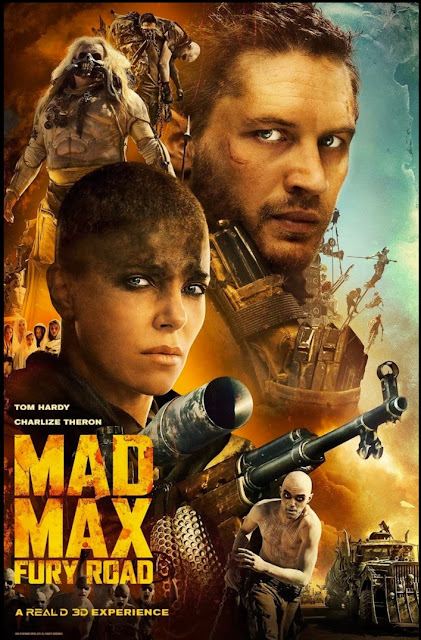Film Lecture Series #7 - Quality & Storytelling Part 2 (Exploitation) + Film Review.
Studios would exploit certain topics within society to fill seats in cinemas to earn more money; an example of this would be B movies, which were movies that were made cheap and tend to have a variety of bad qualities about them (theses ranging from bad acting, sets, story lines and usually had a monster of some sort).
So, Exploitation = Money.
1900-1930’s – Pre-Code Exploitation:
During this time, you also have Tod Browning’s Freaks (1932) which centred around a circus of ‘freaks’ owned by said ‘freaks.’ Audiences of the time found it hard to relate to, so in doing so rejected the film due to the abnormal appearance of the characters within the film. This misconception of the film led people to miss-interpret the storyline of film and thought it to be exploitive when in fact this was not the case.
1930’s: Exploitation Cinema on the Road.
Most film of this era continue the idea of sex (either consensual or through the idea of prostitution) or have an element of drugs being an underlying theme. For example, the Child Bride (1938) is about a schoolteacher in a rural community campaigning to stop the practice of older men marrying underage girls. Another would also be Assassin of Youth (1938) where a high-school girl gets involved with a ring of teenage marijuana smokers and starts down the road to ruin. A reporter poses as a soda jerk to infiltrate the gang of teen dope fiends. Other example includes: Gambling with Souls (1936), Escort Girl (1941) and Reefer Madness (1936). All these examples fall under the Cautionary Tales; which were made to scare, entertain and ‘educate’ audiences of a danger that were split into 3 sections: A taboo/prohibition, some sort of act/location, or something is said to be dangerous.
1930-70s: Exploitation in Men’s Pulp Novels.
Exploitation Core Themes: Sex and Nudism:
The Modern Era
So, exploitation becomes popular within disaster movies revolving around air (Airport 1970), earth (Earthquake 1974), water and fire (Towering Inferno 1974) disaster movies. With this also came a rise in blockbusters which were essentially B Movies at their core, but with a more developed script and larger budget to work with. E.g: sharkpoiltation – Jaws 1975 – B Movie/Pulp – Star Wars 1977 and Monster/ Space Station – Alien 1979.
With the blockbusters in motion, came the end of grindhouse cinema and drive in theatres, as film became more accessible to the audience’s home through video tapes (VHS) in 1975. Which back then was a copyable medium, which faced its own problems due to plagiarism and copyright issues. In addition to this it also meant the rise of video nasties (1980’s), which were illegal copies of violent films not brought through a reputable video store. It also brought about Cannon films that were made cheaply and imitates prior B Movies and Troma Entertainment that were 1950’s B Movie horror play.
The Missing Genre: Ozploitation (Australian Cinema)
Film Review – Mad Max Fury Road (2015)
 |
| Fig 1. Mad Max Fury Road (2015) |
From the director George Miller comes Mad Max Fury Road (2015). Continuing on the mad max franchise, Miller looks
at creating story that focuses on violence, liberation and sexual undertones from
the over powering leadership; this being Immortan Joe and the Citadel, in which
the group of females elite Imperator Furiosa.is trying to smuggle away to a better
safer place.
Throughout the cinematic, Miller looks at a range of ideas
to fuel the story to its end. From beginning to end there it an underlying tone
of exploitation; which is portrayed through the female characters Furiosa is
trying to smuggle to safety. The story looks at using underlying sexual tones
to draw viewers in; filmmakers do this by dressing Immortan Joe’s prized
processions in white skimpy clothes that barely cover them looked at choosing actress’
who are naturally pretty. This suggesting ideals from WIP (Women in Prison)
films have been used to influence the storyline. (Fig 2, 3 see below)
Typically, in WIP films; filmmakers look at sexualizing female characters that would be based in a prison setting. Often times subjecting the female actor into embody an erotic seductress and subject to physical and sexual abuse in the film. This was common in not only sexual exploitation films but pulp novels from the 1930’s to the 1960’s. Although Fury Road doesn’t follow this line of story plot, it is inferred throughout the film; an example of this can be seen where pregnancy if forced upon Immortan Joe’s prized processions (wives) to birth sons for him. Now you don’t directly see this, but it is implied that girls were kept locked away from everyone else and only Immortan Joe had access to them (Fig 4 see below). We also see later in the film one of the girls cutting and strange device off from around her pelvis (Fig 5 see below), suggesting the owner ship Immortan Joe has over his wives implying that either no can touch what’s his to take or it is being used as a punishment to humiliate and embarrass his wife.
Despite the film showing traits of the WIP subgenre to exploitation, the film at looks at female strength and courage to fight against their oppressors. This can be seen in Furiosa’s character as she fights to get the wives to ‘the green place’ and doesn’t give up even when she reaches what she thought to be the green place and finds out it no longer exists (Fig 6 see below). Another example can be seen when Angharad – Immortan Joe’s favourite wife - uses her pregnant body to protect the rig (Fig 7 see below) from damages so they can get away knowing Immortan Joe won’t risk her life to stop them, but will pursue them no matter what as she carries his child; giving this element of power through pregnancy, Angharad can force his hand to be lenient on them so they stay alive.
The film not only explores sexual exploitation, but also delves into violence and character visuals exploitation; which is a prevalent theme throughout the cinematic. Keeping with quick fast paced sequences that result in many deaths in the perusal of Immortan Joe wives and creating characters that exploit the idea of being visually unappealing, as seen with Immortan Joe himself and The People Eaters appearance (much like the freak shows of the 1930/40’s). (Fig 8 and 9 see below)
Illustrations list:
Fig 1. Mad Max Fury Road (2015) [Film Poster, Advertisement] At: https://www.imdb.com/title/tt1392190/mediaviewer/rm658509824/ (Accessed: 21/01/2021).
Fig 2.
Immortan Joe’s Wives Pt1 (2015) [Film Still] At: Over
40 New Mad Max: Fury Road Pictures Feature Tom Hardy (collider.com) (Accessed: 21/01/2021).
Fig 3.
Immortan Joe’s Wives Pt2 (2015) [Film Still] At: Over
40 New Mad Max: Fury Road Pictures Feature Tom Hardy (collider.com) (Accessed: 21/01/2021).
Fig 4. Our
Babies Will Not be Warlords (2015) [Film Still] At: https://www.imdb.com/title/tt1392190/mediaviewer/rm926889728/
(Accessed: 21/01/2021).
Fig 5.
Pelvis Contraption (2015) [Film Still] At: original film - Mad Max: Fury Road,
21:00 10/04/2020, ITV2, 140 mins. https://learningonscreen.ac.uk/ondemand/index.php/prog/0A6E6702?bcast=131672606 (Accessed 21 Jan 2021)
Fig 6.
Furiosa (2015) [Film Still] At: https://www.imdb.com/title/tt1392190/mediaviewer/rm796656640/ (Accessed: 21/01/2021).
Fig 7. Angharad
Protects the Rig (2015) [Film
Still] At: https://www.imdb.com/title/tt1392190/mediaviewer/rm4246081280/ (Accessed: 21/01/2021).
Fig 8.
Immortan Joe (2015) [Film Still] At: Over
40 New Mad Max: Fury Road Pictures Feature Tom Hardy (collider.com) (Accessed: 21/01/2021).
Fig 9. The
People Eater (2015) [Film Still] At: original film - Mad Max: Fury Road, 21:00
10/04/2020, ITV2, 140 mins. https://learningonscreen.ac.uk/ondemand/index.php/prog/0A6E6702?bcast=131672606 (Accessed 21 Jan 2021)















Comments
Post a Comment